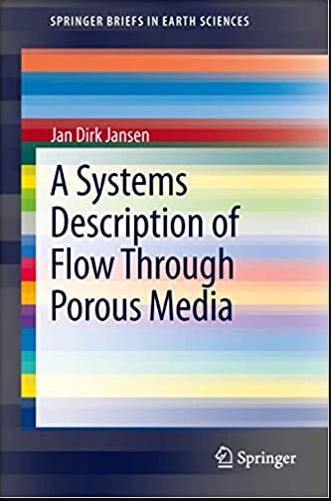English | 134 pages | Springer; 2013th edition (June 5, 2013) | 3319002597 | PDF | 7 Mb
Each of these topics has connections to system-theoretical concepts.
The main objective is to present the classic reservoir simulation equations in a notation that facilitates the use of concepts from the systems-and-control literature.
The first chapter gives a brief review of the basic equations to represent single-phase and two-phase flow. It discusses the governing partial-differential equations, their physical interpretation, spatial discretization with finite differences, and the treatment of wells.
The second chapter develops representations in state-space notation of the porous-media flow equations. The systematic use of matrix partitioning to describe the different types of inputs leads to a description in terms of nonlinear ordinary-differential and algebraic equations with (state-dependent) system, input, output and direct-throughput matrices. Other topics include generalized state-space representations, linearization, elimination of prescribed pressures, the tracing of stream lines, lift tables, computational aspects, and the derivation of an energy balance for porous-media flow.
The third chapter first treats the analytical solution of linear systems of ordinary differential equations for single-phase flow. Next it moves on to the numerical solution of the two-phase flow equations, covering various aspects like implicit, explicit or mixed (IMPES) time discretizations and associated stability issues, Newton-Raphson iteration, streamline simulation, automatic time-stepping, and other computational aspects.








